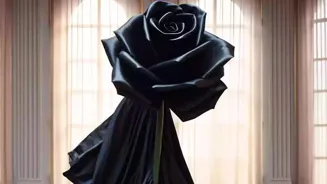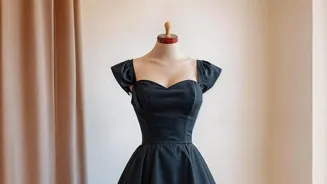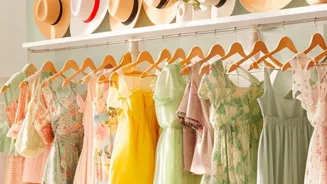Explore the fashion world's game-changers who shaped style forever. From Chanel to McQueen, discover their lasting influence!
The world of fashion, a shimmering tapestry woven with creativity, trends, and
personal expression, owes its evolution to a handful of visionaries. These are the individuals who dared to break the mould, challenge conventions, and redefine what it means to be stylish.
Their influence transcends fleeting trends, leaving an indelible mark on the industry and shaping the way we dress today. Let's take a look at ten such personalities whose contributions were profound and lasting.
Coco Chanel revolutionized fashion with comfort and elegance, freeing women from restrictive clothing
First, let's talk about Coco Chanel. She was a true game-changer. Imagine, back in the day, women were typically strangled by corsets and draped in these complicated dresses! Coco Chanel walked in and said, "Nah, let's get comfortable!".
She introduced simpler, more practical styles – the little black dress, comfortable knitwear, and those classic tweed suits. She essentially freed women from restrictive clothing.
Her emphasis on elegance and simplicity still inspires designers today, showing that true style isn't about being flashy, but about being effortlessly chic and timeless. We still celebrate her vision!
Christian Dior's "New Look" revived ultra-femininity, redefining post-war fashion
Next comes Christian Dior. After the austerity of wartime, Dior burst onto the scene with his "New Look" in 1947. It was all about embracing ultra-femininity again. Think full skirts, a cinched waist, and soft shoulders.
His designs were a welcome contrast to the more utilitarian styles that had become common during the war years. He re-established Paris as the fashion capital of the world. It was a celebration of beauty and optimism. Dior brought back that dream and that romance that people were longing for.
His legacy continues with the House of Dior, of course, which keeps reinventing his core ideas for a new generation.
Mary Quant: Icon of 60s fashion revolution with mini-skirts symbolizing youth and empowerment
Then we have Mary Quant. She captured the spirit of the swinging sixties with her designs that emphasized youthfulness and freedom. She’s most famous for popularizing the mini-skirt. These skirts were a symbol of a cultural shift.
They reflected a broader societal embrace of youth and a rejection of old ideas about what women should wear. It really resonated with the masses. Quant's designs were not just fashion; those were a statement about empowerment and rebellion!
She made fashion accessible and fun for everyone, not just the wealthy elite.
Yves Saint Laurent challenged gender norms in fashion
Now, moving onto Yves Saint Laurent. He was a pioneer in so many ways. One example is the introduction of Le Smoking tuxedo suit for women. It was bold, innovative, and challenged traditional gender norms by putting women in powerful clothes.
He understood that fashion was a way of expressing identity and personality. Saint Laurent wasn't afraid to push boundaries making him a true visionary. He also introduced safari jackets and other looks that blurred the lines between what men and women wore.
Audrey Hepburn epitome of elegance & timeless style
Fourth on the list is Audrey Hepburn. She was an icon of understated elegance. Her collaboration with Hubert de Givenchy created some of the most memorable looks in fashion history. Consider her simple black dress in "Breakfast at Tiffany's." It immediately became the stuff of our dreams.
Hepburn's style transcended trends by being about grace, poise, and simplicity. She proved that less is often more, and that true style comes from within. She was a true ambassador for good taste and timeless elegance that will be never matched.
Alexander McQueen: Rebel of fashion pushing creative boundaries
Let’s not forget about Alexander McQueen. McQueen was a rebel at heart. His fashion shows were more like theatrical performances. They were filled with shock value and artistic expression. McQueen fearlessly combined elements of the classical with the grotesque.
His collections were known for complex tailoring and dark, romantic themes, displaying technical skill. He forced the industry to confront uncomfortable truths and consider the darker aspects of human nature. He left behind a legacy of pushing the boundaries of creativity.









